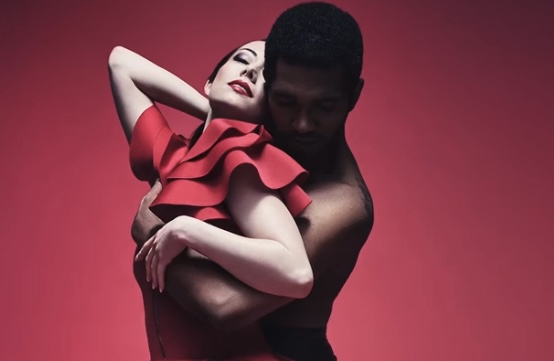Sadler’s Wells hosted a limited run of English National Ballet’s new performance of Carmen, directed by the renowned Swedish choreographer Johan Inger. This phenomenal performance was one of the most striking and memorable interpretations of Georges Bizet’s classical work. The plot revolves around Don José and his tragic obsession with the beautiful gypsy Carmen, but for the first time the story is told on behalf of the man, while the figure of Carmen acts as a lyrical device to reveal the theme of abusive relationships.
Carmen Through the Eyes of Don José
Unlike the usual productions of Carmen, Inger’s interpretation lacks the hot Spanish romance and gaiety, replaced by faceless figures dressed in black jackets, while the bleak setting is determined by the concrete walls of a modern city and the images of violence, madness and death that haunt Don José. In this variation, the minimalist spirit of Scandinavia is evident in the sets, and the dancers’ modern costumes are reminiscent of MiuMiu latest collections, which only adds to the production’scontemporary feel and visually brings the setting of Carmen into the 21st century.
In his work, Inger sought to explore the theme of violence against women, but by doing so through the narrative of the jealous Don José, the choreographer also revealed the character of Carmen from a completely new perspective. Leaving room for theaudience’s own interpretation, Inger, with the help of Don José, seems to question whether Carmen is really a free-spirited beauty, a manipulator who uses her only available weapon for social advancement, or a destructive spirit who brings madness and grief to anyone who meets her.
As Don José plunges into madness, her inner emptiness and her seemingly obvious inability to love are exposed, which makes the ending so expected, yet even more dark: unable to cope with hisfeelings and Carmen’s indifference, Don José kills his beloved. However, since this story represents precisely Don José’s distorted view of unrequited love, the image of Carmen purposefully looses its validity. This image lives a separate life in Don José’s mind, created by him to first love her and then to justify her murder. This adds layers to the nature of Inger’s Carmen — the audiencecannot help but sympathise with Don José, but at the same time is deprived of truly knowing Carmen.
Inger’s extraordinarily lively choreography, together with the impeccable work of the English National Ballet dancers and the use of Rodion Shchedrin’s Bizet arrangements, create a rapidly changing atmosphere that never slows down for a moment in the whirlwind of the characters’ precise but ambiguous movements. The dancers do not need pointe shoes and the ease of movement of their movements speaks even louder as they sneak across the stage, glimpsing Don José and drawing him deeper into the abyss of madness. Despite the short length of the performance, its pacing allows one to fully experience the change in Don José as the plot unfolds and the contrast between its beginning, filled with the colour of women’s dresses and bright lighting, and the end that drowns in Don José’s isolation and dim lights.
In 2016, Inger won one of ballet’s most prestigious awards, the Benois de la Danse, precisely for his work on Carmen. In 2024, almost a decade after its premiere, Inger’s Carmen has become even more relevant amid the increasingly frequent raising of the issue on violence against women in times of widespread military conflicts.





